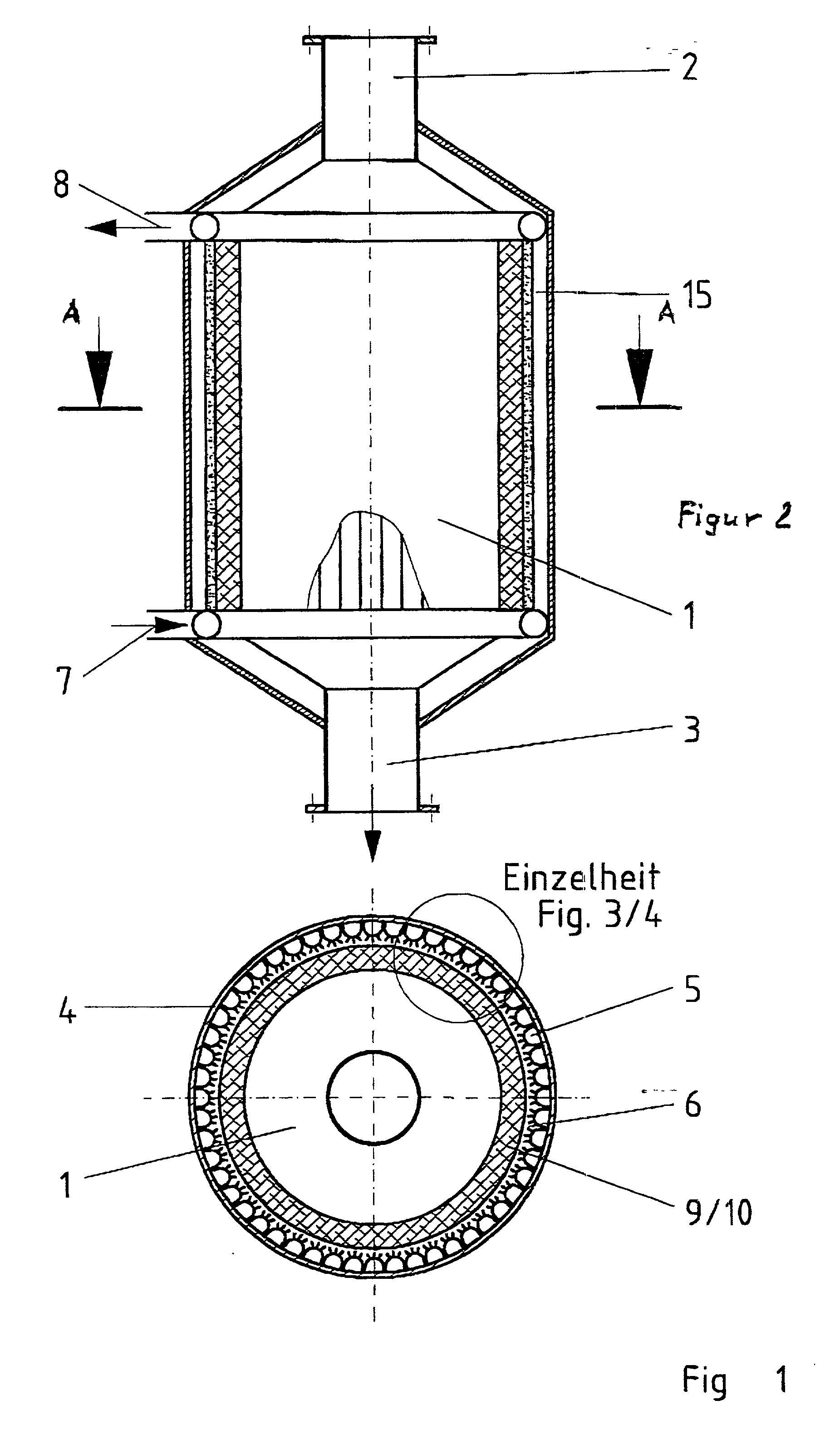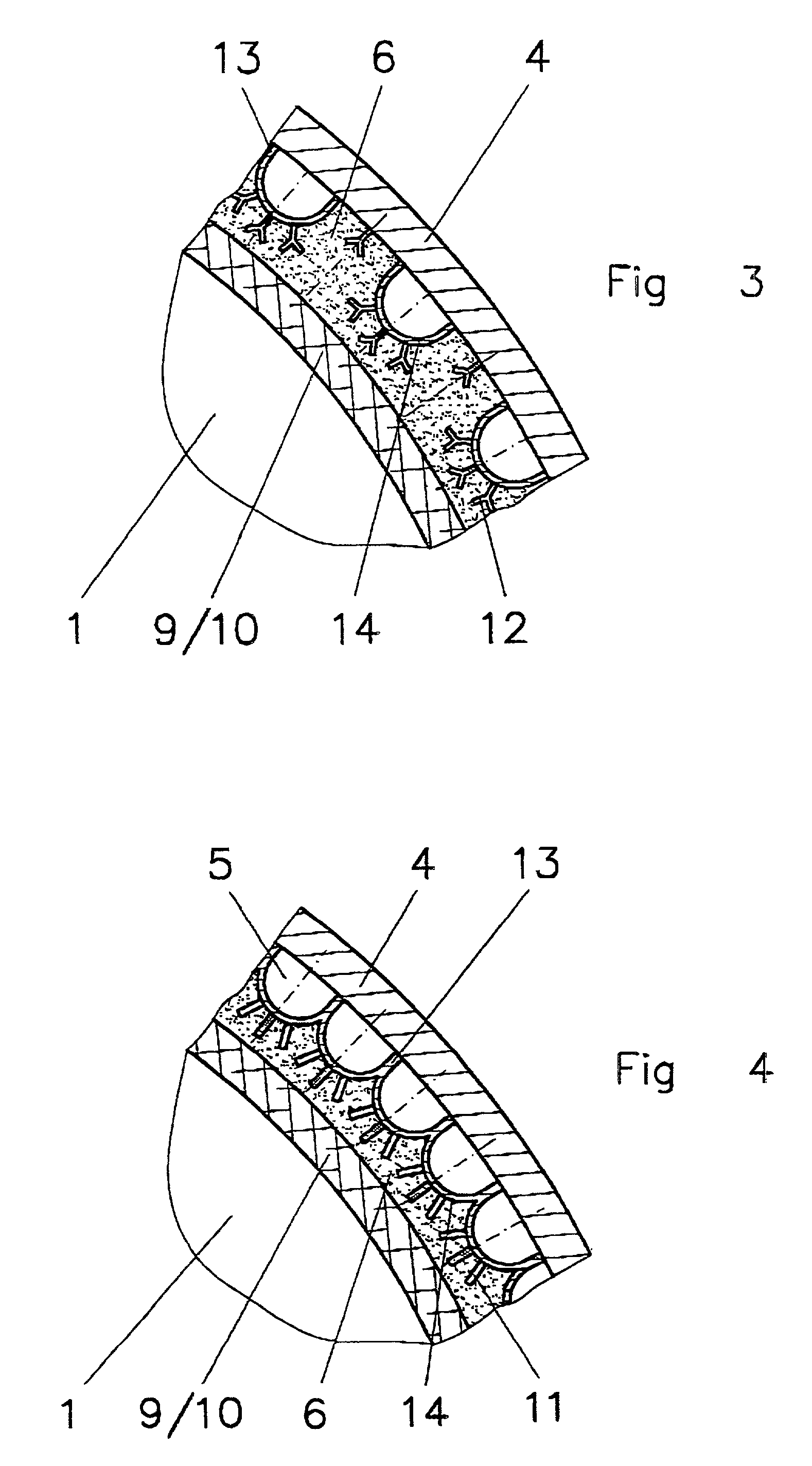Gasification reactor vessel
a gasification reactor and gasification technology, applied in the field of pressure vessels, can solve the problems of limited operating time, long operating time, and use of ash-free fuel materials
- Summary
- Abstract
- Description
- Claims
- Application Information
AI Technical Summary
Benefits of technology
Problems solved by technology
Method used
Image
Examples
Embodiment Construction
[0032] FIGS. 1 and 2 show a longitudinal section and a cross section through the gasification reactor. The conversion of the fuel, residual and waste materials using the oxygencontaining oxidizing agent to form a crude gas containing high levels of H.sub.2 and CO takes place in the reaction chamber 1.
[0033] Referring to FIG. 1, the gasification reactor vessel 20 includes a cylindrical pressure shell 4 and shell ends 24, 26 at opposite ends of shell 20. The elongated encircling body wall of the shell has an inner side 28 (FIG. 3) around which is arrayed a plurality of channel members 30 which extend lengthwise in the shell with the channel open side facing the innerside 28. The channel members 30 are fixedly connected as by watertight and gastight welding connections to the inner side 28 so that an enclosed conduit space is defined in which water coolant can flow. The channel members 30 can be circularly arrayed inside the shell at spaced locations as shown in FIG. 3 or they may be i...
PUM
| Property | Measurement | Unit |
|---|---|---|
| pressure | aaaaa | aaaaa |
| pressure | aaaaa | aaaaa |
| pressure | aaaaa | aaaaa |
Abstract
Description
Claims
Application Information
 Login to View More
Login to View More - R&D
- Intellectual Property
- Life Sciences
- Materials
- Tech Scout
- Unparalleled Data Quality
- Higher Quality Content
- 60% Fewer Hallucinations
Browse by: Latest US Patents, China's latest patents, Technical Efficacy Thesaurus, Application Domain, Technology Topic, Popular Technical Reports.
© 2025 PatSnap. All rights reserved.Legal|Privacy policy|Modern Slavery Act Transparency Statement|Sitemap|About US| Contact US: help@patsnap.com


